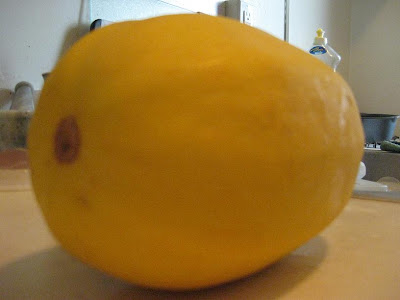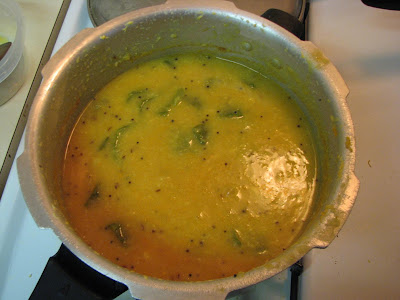 The Poblano pepper (shown on the right) is a type of mexican pepper which is in the same broad family as the familiar capsicum or green bell pepper. I first came across this in California during my internship - they used to make a dish called 'Chile Rellenos' which is basically cheddar cheese stuffed into a Poblano pepper and fried. It just tastes awesome and I started looking for it on the menu of every Mexican restaurant I have been to since - but the california taste never came again.
The Poblano pepper (shown on the right) is a type of mexican pepper which is in the same broad family as the familiar capsicum or green bell pepper. I first came across this in California during my internship - they used to make a dish called 'Chile Rellenos' which is basically cheddar cheese stuffed into a Poblano pepper and fried. It just tastes awesome and I started looking for it on the menu of every Mexican restaurant I have been to since - but the california taste never came again.So I decided that if I want good stuffed Poblano peppers, I have to make it myself. But I didn't want to stuff it with cheese, since it is unhealthy. So I decided to make a desi version - by stuffing with potatoes. Now those of you who like stuffed capsicum would just love this dish. Also, it is a lot easier to stuff the Poblano pepper than the gigantic bell peppers that are available in the USA. Also, the bell peppers here are too mild in taste, whereas the Poblano will fire up the taste buds just right.
This dish is a little more involved than the earlier ones I posted. You first need to prepare the stuffing.
Stuffing:
Ingredients:
1. 2 potatoes boiled and peeled.
You can be pretty creative with how you make the stuffing. Here, I will outline a very rudimentary stuffing, which is the basic aloo paratha stuffing. Take the boiled potatoes, mash them and add the following spices
1. 2 tsp jeera seeds
2. 2 tsp Dhania powder
3. 2-3 tsp Chilli powder
4. Salt to taste
Mix them well and keep aside.
Preparing the Poblano:
1. Take the poblano peppers, carve out the top stem. This is what it will look like.

2. The interior will have a lot of seeds which need to be removed.
This part is important - because if you do not do a good job of removing the seeds, the resulting dish can be too hot to handle. These seeds are not like the capsicum seeds which are too mild anyway. With practice you can figure out the right amount of seeds to leave behind to suit your taste. But if this is your first time - remove all seeds thouroughly.
3. Stuff the aloo-stuffing into the peppers with a spoon. Fill them to the top as shown below.

Frying the Poblano:
1. Take a flat bottom pan and add 2 tsp oil and spread it evenly and heat on low-medium flame.
2. Place the Poblanos in the heated oil and fry.

3. Keep rotating the Poblanos every 2-3 mins till all sides are evenly cooked.
Fry this way for 10-15 mins and it should be done. This is how the final product should look like.

You can sprinkle a little salt on the fried Poblanos to enhance the taste.
Goes best with hot Rice !!!








